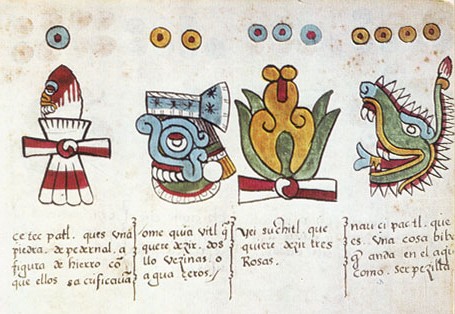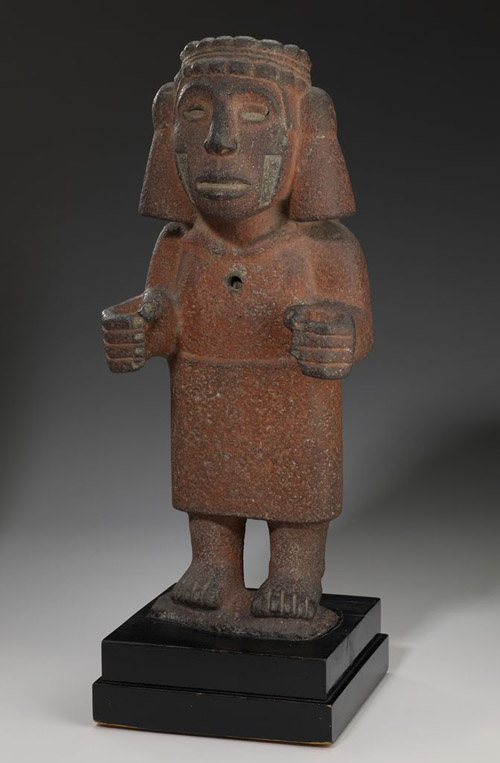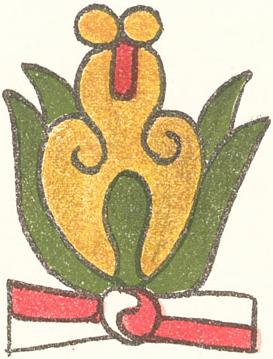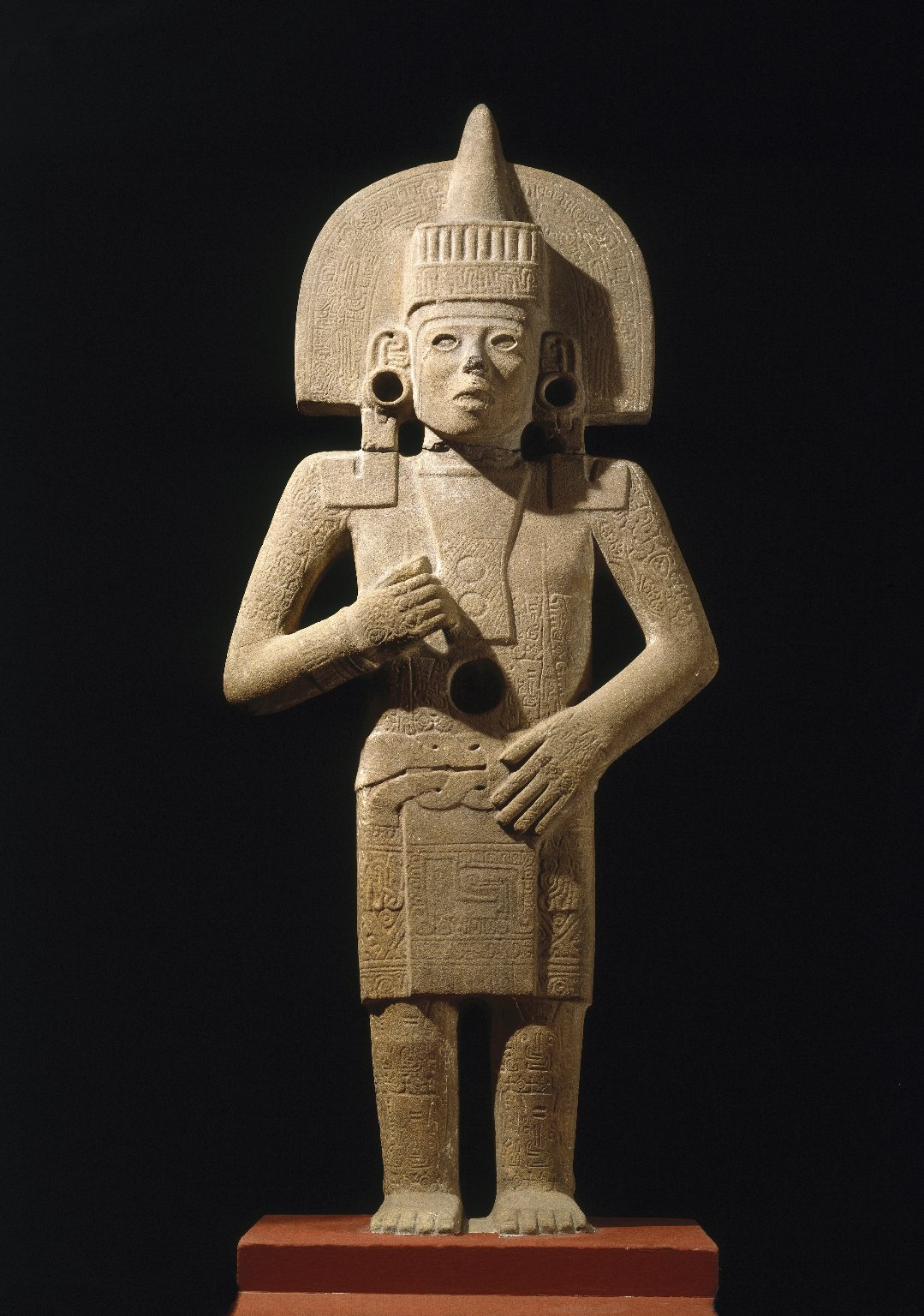|
Codex Borgia
The Codex Borgia ( The Vatican, Bibl. Vat., Borg.mess.1), also known as ''Codex Borgianus'', ''Manuscrit de Veletri'' and ''Codex Yohualli Ehecatl'', is a pre-Columbian Middle American pictorial manuscript from Central Mexico featuring calendrical and ritual content, dating from the 16th century. It is named after the 18th century Italian Cardinal, Stefano Borgia, who owned it before it was acquired by the Vatican Library after the Cardinal's death in 1804. The Codex Borgia is a member of, and gives its name to, the Borgia Group of manuscripts. It is considered to be among the most important sources for the study of Central Mexican gods, ritual, divination, calendar, religion and iconography. It is one of only a handful of pre-Columbian Mexican codices that were not destroyed during the conquest in the 16th century; it was perhaps written near Cholula, Tlaxcala, Huejotzingo or the Mixtec region of Puebla. Its ethnic affiliation is unclear, and could either have been produced ... [...More Info...] [...Related Items...] OR: [Wikipedia] [Google] [Baidu] |
Codex Borgia Page 71
The codex (plural codices ) was the historical ancestor of the modern book. Instead of being composed of sheets of paper, it used sheets of vellum, papyrus, or other materials. The term ''codex'' is often used for ancient manuscript books, with handwritten contents. A codex, much like the modern book, is bound by stacking the pages and securing one set of edges by a variety of methods over the centuries, yet in a form analogous to modern bookbinding. Modern books are divided into paperback or softback and those bound with stiff boards, called hardbacks. Elaborate historical bindings are called treasure bindings. At least in the Western world, the main alternative to the paged codex format for a long document was the continuous scroll, which was the dominant form of document in the ancient world. Some codices are continuously folded like a concertina, in particular the Maya codices and Aztec codices, which are actually long sheets of paper or animal skin folded into pages. The ... [...More Info...] [...Related Items...] OR: [Wikipedia] [Google] [Baidu] |
Tōnalpōhualli
The (), meaning "count of days" in Nahuatl, is a Mexica version of the 260-day calendar in use in pre-Columbian Mesoamerica. This calendar is solar and consists of 20 13-day () periods. Each is ruled by a different deity. Graphic representations for the twenty day names have existed among certain ethnic, linguistic, or archaeologically identified peoples. Description The basis of the is unknown. Several theories have been advanced for this calendrical period: that it represents a Venusian cycle, that it represents the human gestation period, or that it represents the number of days between the zenithal passage of the sun in the tropical lowlands. On the other hand, some scholars including J. E. S. Thompson suggest that the was not based on natural phenomena at all, but rather on the integers 13 and 20, both considered important numbers in Mesoamerica. The other major Mexica calendar, the , is a 365-day year, based on 18 months of 20 days and five nameless days. A was ... [...More Info...] [...Related Items...] OR: [Wikipedia] [Google] [Baidu] |
Mayahuel
Mayahuel () is the female deity associated with the maguey plant among cultures of central Mexico in the Postclassic era of pre-Columbian Mesoamerican chronology, and in particular of the Aztec cultures. As the personification of the maguey plant, Mayahuel is also part of a complex of interrelated maternal and fertility goddesses in Aztec religion and is also connected with notions of fecundity and nourishment. Description Origins from the maguey plant Maguey is a flowering plant of the genus ''Agave'', native to parts of southwestern modern United States and Mexico. The depictions of Mayahuel in the Codex Borgia and the Codex Borbonicus show the deity perched upon a maguey plant. The deity's positioning in both illustrations, as well as the same blue pigment used to depict her body and the body of the maguey plant on Page 8 of the Codex Borbonicus, give the sense that she and the plant are one. Furthermore, the Codex Borbonicus displays Mayahuel as holding what looks like rop ... [...More Info...] [...Related Items...] OR: [Wikipedia] [Google] [Baidu] |
Chalchiuhtlicue
Chalchiuhtlicue (from ''chālchihuitl'' "jade" and ''cuēitl'' "skirt") (also spelled Chalciuhtlicue, Chalchiuhcueye, or Chalcihuitlicue) ("She of the Jade Skirt") is an Aztec deity of water, rivers, seas, streams, storms, and baptism. Chalchiuhtlicue is associated with fertility, and she is the patroness of childbirth. Chalchiuhtlicue was highly revered in Aztec culture at the time of the Spanish conquest, and she was an important deity figure in the Postclassic Aztec realm of central Mexico. Chalchiuhtlicue belongs to a larger group of Aztec rain gods, and she is closely related to another Aztec water god called Chalchiuhtlatonal. Religious significance Chalchiuitlicue directly translates to "Jade her skirt"; however, her name is most commonly interpreted as "she of the jade skirt." She was also known as Chalchiuhtlatonac (chalchihu tltla-tona-c) "She who shines like jade" and Matlalcueye "Possessor of the Blue Skirt" by the Tlaxcalans, an indigenous group who inhabited th ... [...More Info...] [...Related Items...] OR: [Wikipedia] [Google] [Baidu] |
Metztli
In Aztec mythology, Mētztli (; also rendered Meztli, Metzi, literally "Moon") was a god or goddess of the moon, the night, and farmers. They were likely the same deity as Yohaulticetl or Coyolxauhqui and the male moon god Tecciztecatl; like the latter, who feared the Sun because of its fire. Legend The Moon and Sun were at one time equally bright. Fearing the earth would burn under the light of two luminaries, one of the gods threw a rabbit in the face of the other, and the one struck darkened to become today's Moon. Henceforth it is possible to distinguish a figure of a rabbit on the Moon's surface. During a full moon, the "Rabbit in the Moon" becomes readily visible. Otomi mythology For the Otomi people, Zäna was the Moon, the Queen of the Night, probably the main deity. They called her the Young Mother, who represented both Moon and Earth simultaneously. Her spouse, the Old Father, was the god of fire. The Otomi counted lunar months as a period from new moon to new m ... [...More Info...] [...Related Items...] OR: [Wikipedia] [Google] [Baidu] |
Huēhuecoyōtl
In Aztec mythology, Huehuecóyotl (from ''huēhueh'' "very old" (literally, "old old") and ''coyōtl'' "coyote" in Nahuatl) is the auspicious Pre-Columbian god of music, dance, mischief, and song. He is the patron of uninhibited sexuality and rules over the day sign in the Aztec calendar named cuetzpallin (lizard) and the fourth trecena Xochitl ("flower" in Nahuatl). History Stories derived from the Codex Telleriano-Remensis characterized Huehuecóyotl as a benign prankster, whose tricks were often played on other gods or even humans, but tended to backfire and cause more trouble for himself than for the intended victims. A great party-giver, he also was alleged to create wars among humans to relieve his boredom. He was a part of the Tezcatlipoca (Smoky Mirror) family of the Mexica gods and inherited their shapeshifting powers. Those who had indications of evil fates from other gods would sometimes appeal to Huehuecóyotl to mitigate or reverse their fates. Huehuecóyotl ... [...More Info...] [...Related Items...] OR: [Wikipedia] [Google] [Baidu] |
Tepēyōllōtl
In Aztec mythology, Tepēyōllōtl (; "heart of the mountains"; also Tepeyollotli) was the god of darkened caves, earthquakes, echoes and jaguars. He is the god of the Eighth Hour of the Night, and is depicted as a jaguar leaping towards the sun. In the calendar, Tepeyollotl rules over both the third day, Calli (house), and the third trecena, 1-Mazatl (deer). The word is derived as a compound of the Nahuatl words ' ("mountain"), and ' ("heart" or "interior"). Tepeyollotl is usually depicted as cross-eyed holding the typical white staff with green feathers. Sometimes Tezcatlipoca Tezcatlipoca (; nci, Tēzcatl ihpōca ) was a central deity in Aztec religion, and his main festival was the Toxcatl ceremony celebrated in the month of May. One of the four sons of Ōmeteōtl, Ometecuhtli and Omecihuatl, the God of providenc ... wore Tepeyollotl for an animal skin or disguise to trick other gods into not knowing who he was. References Aztec gods Nature gods Mythological ... [...More Info...] [...Related Items...] OR: [Wikipedia] [Google] [Baidu] |
Ehecatl
Ehecatl ( nci-IPA, Ehēcatl, eʔˈeːkatɬ, ) is a pre-Columbian deity associated with the wind, who features in Aztec mythology and the mythologies of other cultures from the central Mexico region of Mesoamerica. He is most usually interpreted as the aspect of the Feathered Serpent deity (Quetzalcoatl in Aztec and other Nahua cultures) as a god of wind, and is therefore also known as Ehecatl-Quetzalcoatl. Ehecatl also figures prominently as one of the creator gods and culture heroes in the mythical creation accounts documented for pre-Columbian central Mexican cultures.Miller and Taube (1993, pp. 70,84) Since the wind blows in all directions, Ehecatl was associated with all the cardinal direction The four cardinal directions, or cardinal points, are the four main compass directions: north, east, south, and west, commonly denoted by their initials N, E, S, and W respectively. Relative to north, the directions east, south, and west are a ...s. His temple was built as a cy ... [...More Info...] [...Related Items...] OR: [Wikipedia] [Google] [Baidu] |
Tōnacātēcuhtli
In Aztec mythology, Tonacatecuhtli was a creator and fertility god, worshipped for peopling the earth and making it fruitful. Most Colonial-era manuscripts equate him with Ōmetēcuhtli. His consort was Tonacacihuatl. Tonacateuchtli is depicted in the Codex Borgia. Etymology The god's name is a compound of two Nahuatl words: and . While is generally translated "lord", presents several possible interpretations. Some read this root as (without the long 'o'), consisting of , meaning "human flesh" or "food", with the possessive prefix ("our"). By this etymology, would mean "Lord of Our Food" or "Lord of Our Flesh", most commonly rendered "Lord of Our Sustenance." The word simply means "abundance", giving the alternate reading "Lord of Abundance". Origin and role Tōnacātēcuhtli was the Central Mexican form of the aged creator god common to Mesoamerican religion. According to the Codex Ríos, the History of the Mexicans as Told by Their Paintings, the Histoyre du Mechiq ... [...More Info...] [...Related Items...] OR: [Wikipedia] [Google] [Baidu] |
Lords Of The Night
In Mesoamerican mythology the Lords of the Night ( nci, Yoalteuctin) are a set of nine gods who each ruled over every ninth night forming a calendrical cycle. Each lord was associated with a particular fortune, bad or good, that was an omen for the night that they ruled over. The lords of the night are known in both the Aztec and Maya calendar, although the specific names of the Maya Night Lords are unknown. The glyphs corresponding to the night gods are known and Mayanists identify them with labels G1 to G9, the G series. Generally, these glyphs are frequently used with a fixed glyph coined F. The only Mayan light lord that has been identified is the God G9, Pauahtun the Aged Quadripartite God. The existence of a 9 nights cycle in Mesoamerican calendrics was first discovered in 1904 by Eduard Seler. The Aztec names of the Deities are known because their names are glossed in the Codex Telleriano-Remensis and Codex Tudela. Seler argued that the 9 lords each corresponded to one ... [...More Info...] [...Related Items...] OR: [Wikipedia] [Google] [Baidu] |
Codex Vaticanus B
Codex Vaticanus B, ( The Vatican, Bibl. Vat., Vat.Lat.773) also known as ''Codex Vaticanus 3773'', ''Codice Vaticano Rituale'', and ''Códice Fábrega'', is a pre-Columbian Middle American pictorial manuscript, probably from the Puebla part of the Mixtec region, with a ritual and calendrical content. It is a member of the Borgia Group of manuscripts. It is currently housed at the Vatican Library. Description Codex Vaticanus B is a screenfold book made from ten segments of deerskin joined together, measuring 7240 centimeters in total length. These segments have been folded in 49 pages in an accordion fashion, each page measuring 14.5 by 12.5 centimeters, making it one of the smallest Mesoamerican codexes. The deerskin has been covered by a bright white burnished gesso. Red lines are used to frame and divide parts of compositions, black outlines are used to demarcate figures, and finally a limited set of approximately six colours has been used to colour it. The book keeps its o ... [...More Info...] [...Related Items...] OR: [Wikipedia] [Google] [Baidu] |
Codex Cospi
The Codex Cospi (or Codex Bologna) is a pre-Columbian Mesoamerican pictorial manuscript, included in the Borgia Group. It is currently located in the library of the University of Bologna. Like other manuscripts in the Codex Borgia, the Codex Cospi is believed to derive from the Puebla-Tlaxcala region but the exact origin of the manuscript is unknown. The contents of the manuscript are of a religious and divinatory character including depictions of the Venus god, Tlahuizcalpanteuhtli, and of Gods, or priests dressed as gods, present offerings in front of temples. The back side pictorially describes rituals that involve counted bundles in front of deities. The rituals are intended for obtaining good luck and protection in several activities. Similar scenes are found in the codices '' Fejérváry-Mayer'' and '' Laud''. Eduard Seler Eduard Georg Seler (December 5, 1849 – November 23, 1922) was a prominent German anthropologist, ethnohistorian, linguist, epigrapher, academi ... [...More Info...] [...Related Items...] OR: [Wikipedia] [Google] [Baidu] |










